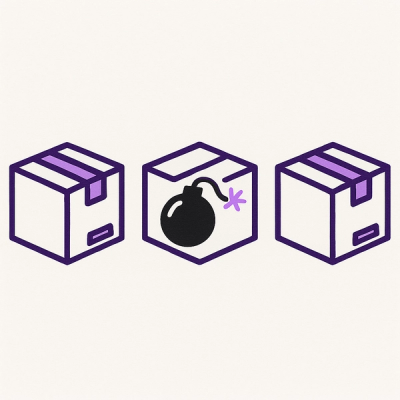Using Custom Components for SDK-R, SDK-A
Overview
This project provides you with an environment to extend SDK-R/SDK-A by giving you tools to create and publish custom components that are not available from the SDK-R/SDK-A release.
Prerequisites
Ensure you have access to the following in your system:
-
Pega Infinity Server version 24.1
-
Git version 2.30 or later
-
System node version 18, 20
-
System npm version 8, 10 (npm 9 not supported)
-
Installed SDK-R or SDK-A, as the below commands live in the package.json of the SDK-R/SDK-A an NOT in this npm module
Create custom components
Create custom components using the following procedure:
-
Enter the following command to create a component:
npm run create
You will then be asked to enter or review the following details of the component:
- Name of the component (required)
Example -
customcomp0
- Name of component label (required)
Example -
custom component
- Name of the library (required)
Example -
basic
- Component version (required)
Example -
0.0.1
- Type of component (required)
Example -
Field
- Sub-type of component (required)
Example -
Text
- Description of the component (optional)
Example -
This is a customized searchbox that filters data.
The component is created in the following path: /Users/your_user_name/project_name/src/components/type/component_name (where type is currently field, template or widget)
You can also pre-configure the values for the above options in a dxcb.config.json file as shown below.
```json
{
"component": {
"library": "basic",
"version": "0.0.1",
"type": "field",
"subtype": "text",
"description": "basic field for capturing textual data",
"icon": "basic-field-text.svg"
}
}
```
Note:
Alternatively, you can enter the following command to skip entering the details of the component now and can manually enter the details in the config.json file after the component is created:
npm run create <enter_component_name>
A src/components folder is created and the necessary files required to build the component are initialized as seen below.
```sh
├── src
├── components
├── type (field, template or widget)
├── <component_name>
├── index.js
├── demo.stories.js
├── config.json
```
The index.js file contains the actual component rendering logic.
The demo.stories.js file contains the demo that can be viewed in the storybook.
The config.json file contains the mapping of properties for configuring the auto generated property panel. This property panel appears in AppStudio when an application is being authored to use the custom component.
-
Enter the following command to start the storybook to view the demo.
npm run startStorybook (Angular) npm run storybookSDK (React) or npm run storybookConstellation (React)
-
Modify the source files to build your own component. You can also install and import third-party libraries if required for your component.
The custom component is now created. We use the information provided to create uniquely namespaced components in this convention - <organization>_<library>_<component name>.
-
local build, you can build the component locally to check for config validation and component validation. Enter
npm buildComponent
buildComponent will do the same first 2 steps as publish, but will not publish to the server. This allows you to compile your component locally and fix errors before publish.
Authenticate the user
Before we publish the custom component to the Pega Infinity Server, authenticate the user to access the resources in the Pega Infinity Server.
Note:
It is required that you configure a value for clientId, clientSecret, and accessTokenUri.
- Login to Pega Infinity Server, navigate to Records / Security / OAuth 2.0 Client Registration landing page and open the DX-CustomComponents record.
- Click Regenerate Client Secret, download the Client Credentials (as the Client ID, Client Secret, and Access token endpoint will be needed), and save the record.
- Update the the task.config.json file with these downloaded values:
"server-config": {
"server": "https://127.0.0.1:8080/prweb",
"user": "customcomponentoperator",
"password": "pwd",
"clientId": "<mention client ID here>",
"clientSecret": "<mention client secret here>",
"accessTokenUri": "https://127.0.0.1:8080/prweb/PRRestService/oauth2/v1/token"
},
- Enter the following command to initiate authentication.
npm run authenticate
The user is now authenticated and can proceed to either publish or list the components.
Publish custom components
Enter the following command to publish custom components to Pega Infinity Server:
npm run publish
npm run publishAll
Publish the finalized custom components changes to Pega Infinity Server so that it can be discoverable in authoring (design palette).
You will then be asked to enter the following details:
-
The component to be published to Pega Infinity Server. It will be updated if the component exists.
- If publishAll, then you won't get a list
-
The name of the ruleset where the component must be published.
-
The version of the ruleset where the component must be published.
-
Specify if the development build should be generated for debugging.
-
If publishAll, will sequentially go through the list of local components and publish them
You can also pre-configure the values for the above options in a tasks.config.json file as shown below. The server, user name, and password must be pre-configured.
```json
{
"components-server-config": {
"server": "http://127.0.0.1:8080/prweb",
"user": "customcomponentoperator",
"password": "pwd"
"rulesetName": "TestPega-C11nGall",
"rulesetVersion": "01-01-03",
"sourceOfComponents": "Server",
"devBuild": false,
}
}
```
When the component is successfully published, you can use the newly published component in App Studio's view authoring.
Note:
The Rule-UI-Component instance (with component name) is created on the Pega Infinity Server after publishing the component.
List custom components
View the available components in the local machine or the server.
Enter the following command to list custom components:
npm run list
You will then be asked to enter the following details:
- List components from Server or Local?
Example -
Server
The custom components will now be listed in the terminal.
Delete custom components
Delete the available or published components in the local machine or the server.
Enter the following command to delete custom components:
npm run delete
npm run deleteAll
You will then be asked to enter the following details:
-
Delete components from Server or Local?
Example - Local
-
Select component to delete
The list of available components in the following path will be displayed: _/Users/your_user_name/project_name/src/components
Select the component to be deleted from this list.
-
For deleteAll you will see the full list and asked if you want to delete them all.
-
Are you sure?
Example - yes
Note:
If you choose to delete components from the server, the successfully published components along with their ruleset name and ruleset version from the Pega Infinity Server will be displayed. Select the component to be deleted from this list.
View existing custom components in storybook
View custom components in a storybook by performing the following procedure:
The storybook is launched in a browser where you can view the components working in isolation.



